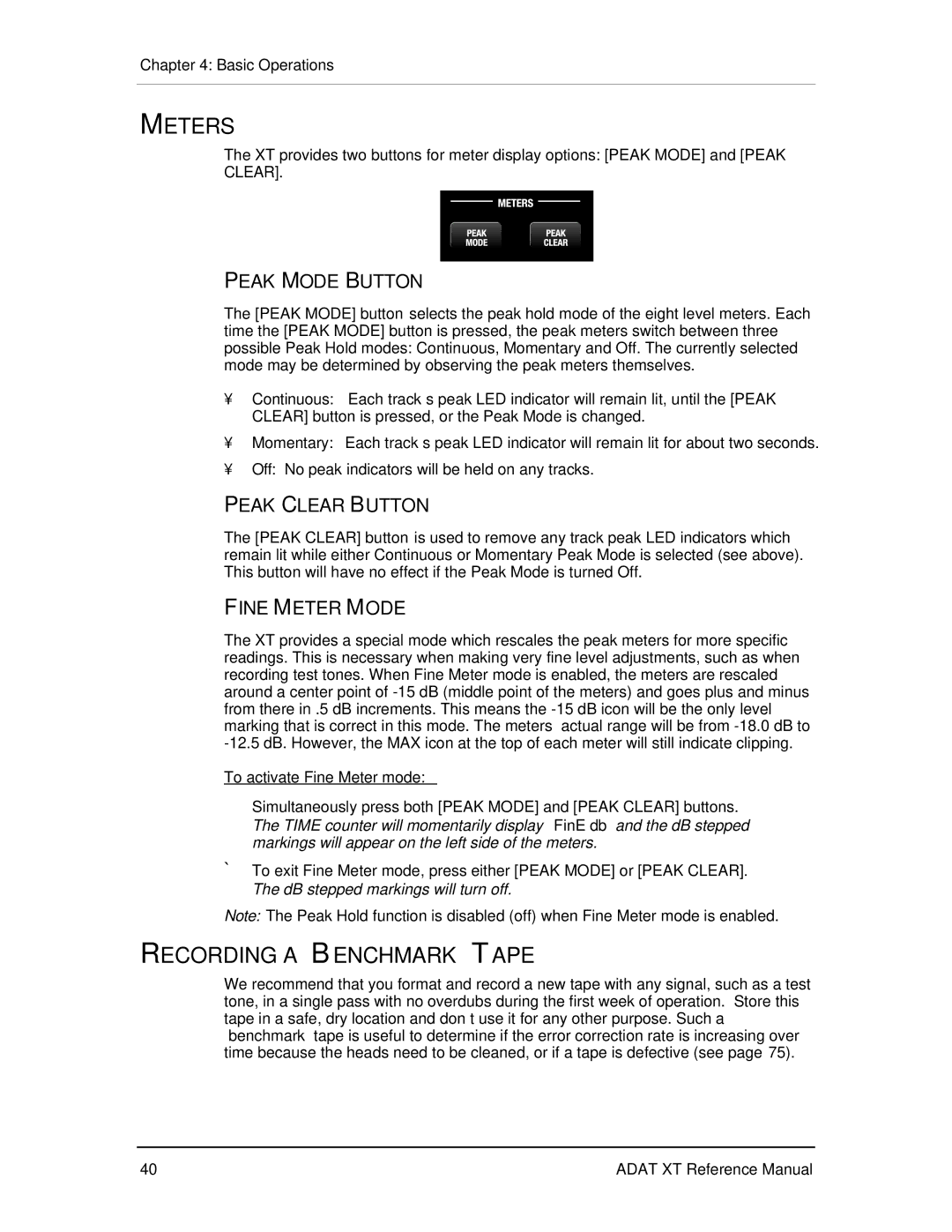
Chapter 4: Basic Operations
METERS
The XT provides two buttons for meter display options: [PEAK MODE] and [PEAK CLEAR].
PEAK MODE BUTTON
The [PEAK MODE] button selects the peak hold mode of the eight level meters. Each time the [PEAK MODE] button is pressed, the peak meters switch between three possible Peak Hold modes: Continuous, Momentary and Off. The currently selected mode may be determined by observing the peak meters themselves.
•Continuous: Each track’s peak LED indicator will remain lit, until the [PEAK CLEAR] button is pressed, or the Peak Mode is changed.
•Momentary: Each track’s peak LED indicator will remain lit for about two seconds.
•Off: No peak indicators will be held on any tracks.
PEAK CLEAR BUTTON
The [PEAK CLEAR] button is used to remove any track peak LED indicators which remain lit while either Continuous or Momentary Peak Mode is selected (see above). This button will have no effect if the Peak Mode is turned Off.
FINE METER MODE
The XT provides a special mode which rescales the peak meters for more specific readings. This is necessary when making very fine level adjustments, such as when recording test tones. When Fine Meter mode is enabled, the meters are rescaled around a center point of
To activate Fine Meter mode:
¿Simultaneously press both [PEAK MODE] and [PEAK CLEAR] buttons. The TIME counter will momentarily display “FinE db” and the dB stepped markings will appear on the left side of the meters.
¡To exit Fine Meter mode, press either [PEAK MODE] or [PEAK CLEAR]. The dB stepped markings will turn off.
Note: The Peak Hold function is disabled (off) when Fine Meter mode is enabled.
RECORDING A “BENCHMARK” T APE
We recommend that you format and record a new tape with any signal, such as a test tone, in a single pass with no overdubs during the first week of operation. Store this tape in a safe, dry location and don’t use it for any other purpose. Such a “benchmark” tape is useful to determine if the error correction rate is increasing over time because the heads need to be cleaned, or if a tape is defective (see page 75).
40 | ADAT XT Reference Manual |
